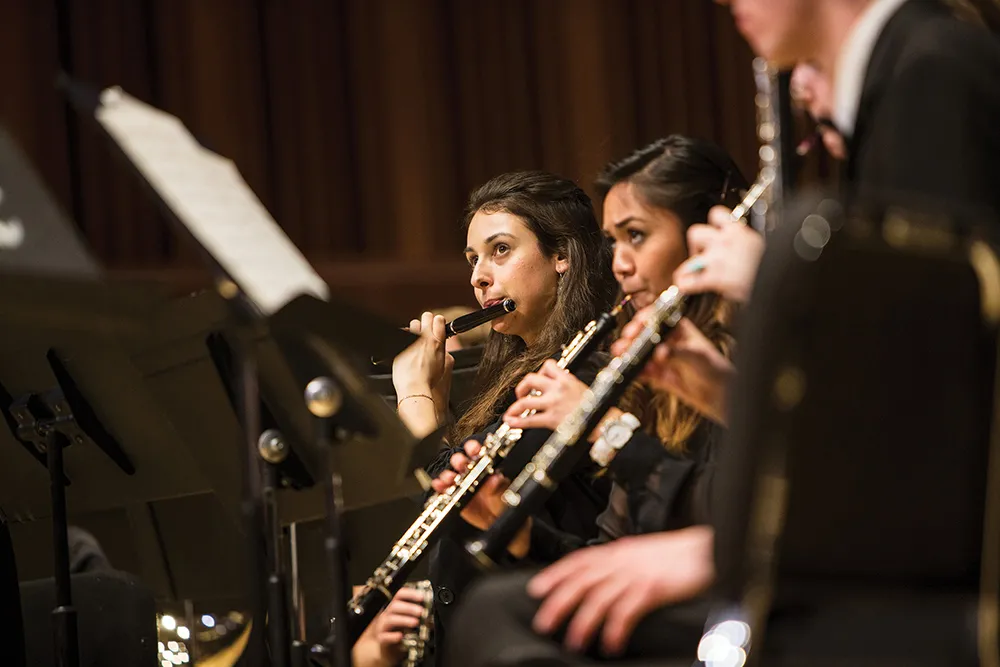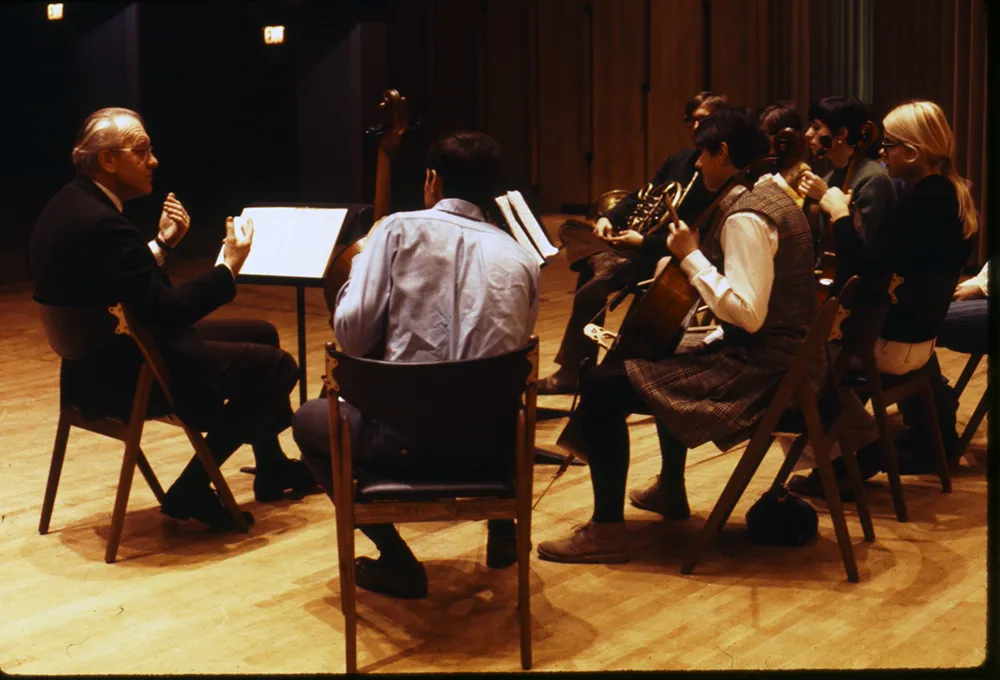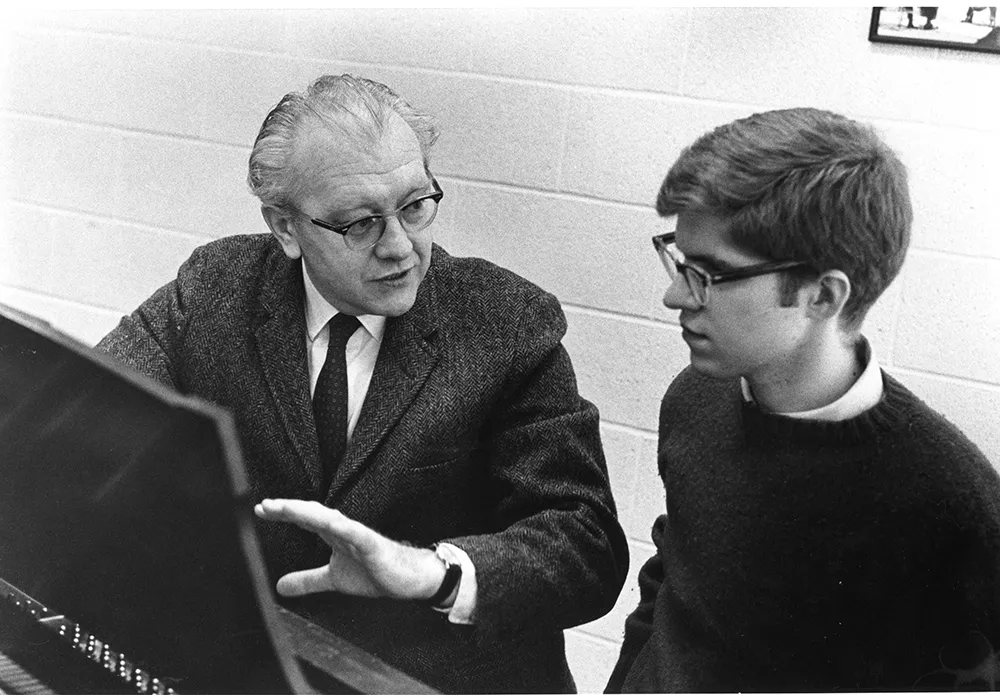Karel Husa was relaxing at his summer cottage on Cayuga Lake on August 20, 1968, when he turned on his transistor radio and heard some alarming news: Warsaw-Pact troops had just invaded his native Czechoslovakia, and thousands of troops and tanks were rolling into Prague.
As a composer, Husa responded the way he knew best — through music. As it happened, he had just received a commission to write a piece for the concert band at Ithaca College, where he had been appointed a lecturer of composition the year before. Distraught by what was happening in his home country, Husa spent the next six weeks composing what would become his best-known work — “Music for Prague 1968.”
After an initial performance on campus, the Ithaca College Concert Band premiered the four-movement piece at the Music Educators National Conference, Eastern Division, in Washington, D.C., on January 31, 1969. Within months, bands on college campuses across the country were playing it, and over the next 50 years, “Music for Prague 1968” would appear on concert programs more than 10,000 times.
“It was like an earthquake, because what I heard and what people heard was something that they had never heard in band music,” says Frank Battisti ’53, MS ’64, a friend of Husa’s who became the director of the New England Conservatory Wind Ensemble. “It changed the evolution of band and wind ensemble music from that point on.”


